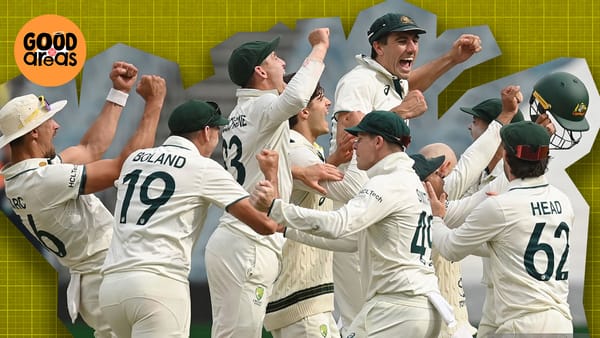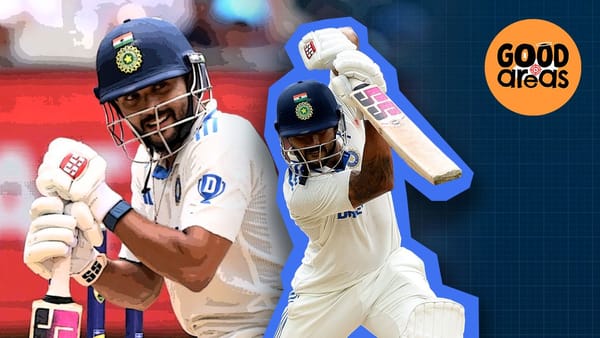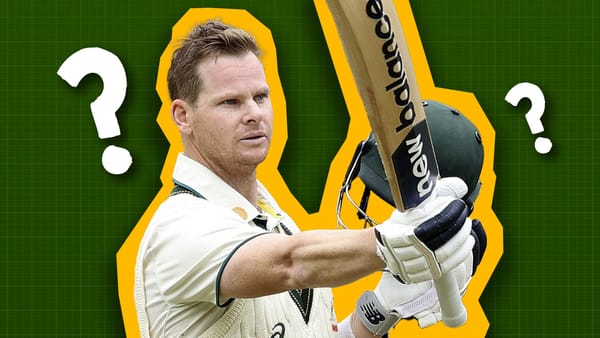Two big hits to women's international cricket
The retirements of Dottin and Lees are a big deal to Women's Cricket.
Deandre Dottin retired recently. It feels like she's played forever, so if your first thought was, well good on her, hopefully she makes some coin at the back end of her career that was mine.
However, Deandre Dottin is 31. She made her debut in 2008, which means she's already had a 14-year international career, that's long for anyone. And not only does she have an outstanding batting record, and a handy bowling record, she has done some things. In 2010 she made a hundred in 38 balls against South Africa. Women's cricket was not at a 100 from 38 balls level back then. The runs per over that year were 6.1. She was only 18.
She was one of the players that helped change the game, and her career went through three eras. Amateur, semi-professional and franchise.
And at 31, and with a career at the top level for so long, you could see why she would want to move on. Even if 31 is far closer to peak than retirement age. It feels like a loss to the West Indies on a few years of good performances and incredible experience.
So why has this happened? My first thought was is this was one of the first major retirements mid-career of a woman to cash in on the new women's leagues. And it wasn't the only one because Lizelle Lee also retired from South Africa, and I assumed she was older. But she's even younger than Dottin. Although Lee's career started later, she's still been playing for almost a decade.
In some ways these retirements only happened because of franchise cricket. If T20 leagues didn't exist, these women would have stayed. But when you check their reasons, it's a lot more interesting.
This is about the entire professional structure of women's cricket. Because these stories would have been so different a decade or so back. Then women left early to make money outside of cricket.
Thanks to all for the love and support with in my past 14 years of playing cricket for West Indies! I look forward to be playing domestic cricket around the world
— Deandra Dottin (@Dottin_5) 11:02 PM ∙ Jul 31, 2022
But the entire thing has changed. Dottin's retirement letter is a piece of art. It's so formal that she uses the address of Cricket West Indies and also refers to the senior team. Incase people thought she was late to retire from the under 19s.
Then she talks about how she's overcome much in her career, which is undoubtedly true of almost all women cricketers. But the current team is non-conductive to her playing well or wanting to. That's one of those big shots she is known for.
She follows that up with a swipe at the team culture and team environment, saying that is why she hasn't performed of late. Bang, whack. Was the money and franchise culture a part of this, without doubt. But this feels like she has a deep and personal grudge with something to do with the team.
For a blow-by-blow account, it's worth popping over to West Indies on 99.94, who take this down stanza by stanza in their own words. But let's look at the highlights. It was sent just after midnight UK time on her Twitter. That isn't the only fun timing, the letter was written long before. And she sent it midway through the commonwealth games in which she is playing for Barbados.
Her captain in that team is Hayley Matthews, who is also the new West Indian Women's captain. Dottin's retirement was written less than a week after that announcement. Make of that what you will.
But that also brings us to Lizelle Lee and her early exit. Remember she is only 30, is a major part of South Africa's golden generation, and is now leaving early for franchise cricket.
She left the game early because she was afraid she wouldn't be chosen for South Africa for fitness reasons, leading to her not being able to play in those leagues.
Show canvas
Now there's a lot going on here. For one, what is Lee's role, to hit sixes. She has the fourth most in T20Is, despite not having played 100 matches. She has the second most in ODIs. Dottin has the most in both, by the way. I have seen Lees clearl the fence at the MCG and Grace road. I don't mean the small women ropes, I mean the actual fences. And those two grounds must be in the 95th, or maybe 99th, percentile for largest cricket grounds. She is an incredible hitter.
There is a question when it comes to fitness in batting. The less fit you are, the more it affects your concentration and decision-making as you get tired. That's not her job though is it. You're wanting her to hit sixes, and as we see with modern batters, they're getting bigger and stronger. The trade-off is that they will be less mobile of course. She's not a quick runner and certainly not a plus in the field. Neither is Chris Gayle.
Fitness should be a big deal in cricket, after decades of it being overlooked. As cricket has become more professional so has fitness. But cricket is also more specialised. Getting your fast bowler to do the same fitness tests as your power hitter makes no sense. This game is changing.
And think of the era Lee entered. She entered an amateur game where none of this mattered. And now she's probably more like the future of batting. But is being penalised for not fitting into the current system.
The other thing happening here is that the franchise system is taking over. Remember, most women's teams are either not professional or barely. We have the hundred, CPL, Big Bash, perhaps PSL and IPL to follow. Not to mention the Fairbreak International. Outside a couple of nations it's far better if you're a good player to be on the circuit than play for your nation.
And think about how fast this is. Dottin was playing for six years before we had our first professional nation team; England in 2014. The WBBL starts the next year. We finally reached a point where women cricketers had a job, and instantly there was a second way for them to earn. A bit like Dottin's 100, that sure as hell came fast.
We've not even seen our first generation of women's cricketers who grew up thinking this was a career choice yet. Dottin and Lees got into the sport for the love of the game. They both had to wait to be paid outside their home nations for the first time, and then as they hit 30 there are suddenly career paths and everything popping up.
The women's game is transforming like nothing we have ever seen in cricket. The men had professionalism for 200 years through the county game. International players were paid, even if it usually wasn't what they were worth and sometimes enough to make a career. And then from the 90s, most of the major nations could give you a decent living wage, and from the 2000s, there were central contracts before the franchise system came in.
Women's cricket skipped almost all of that. Ten years ago women were retiring early because they had to start their actual careers. Now they are retiring from their national teams that only just started paying them to make more money in cricket.




